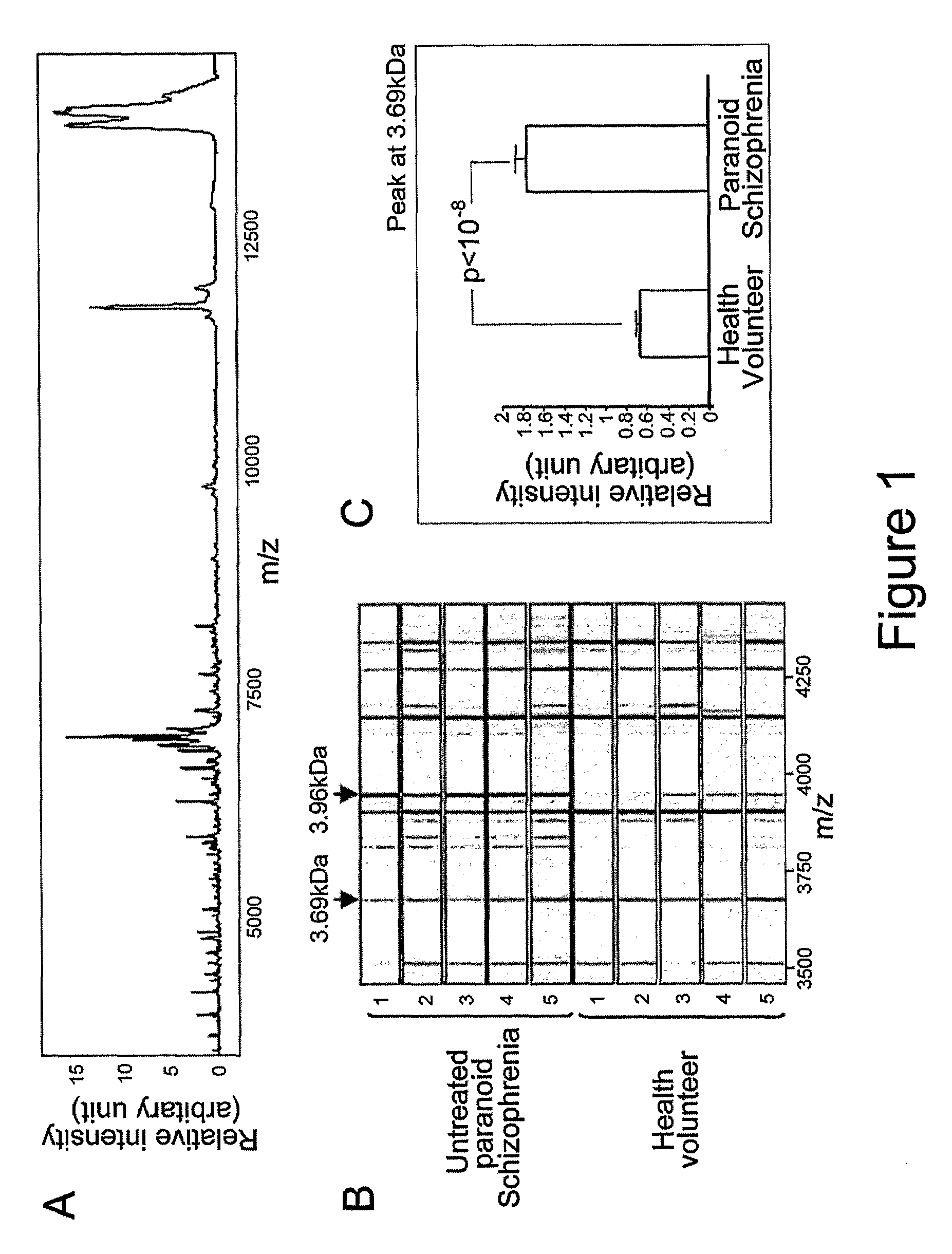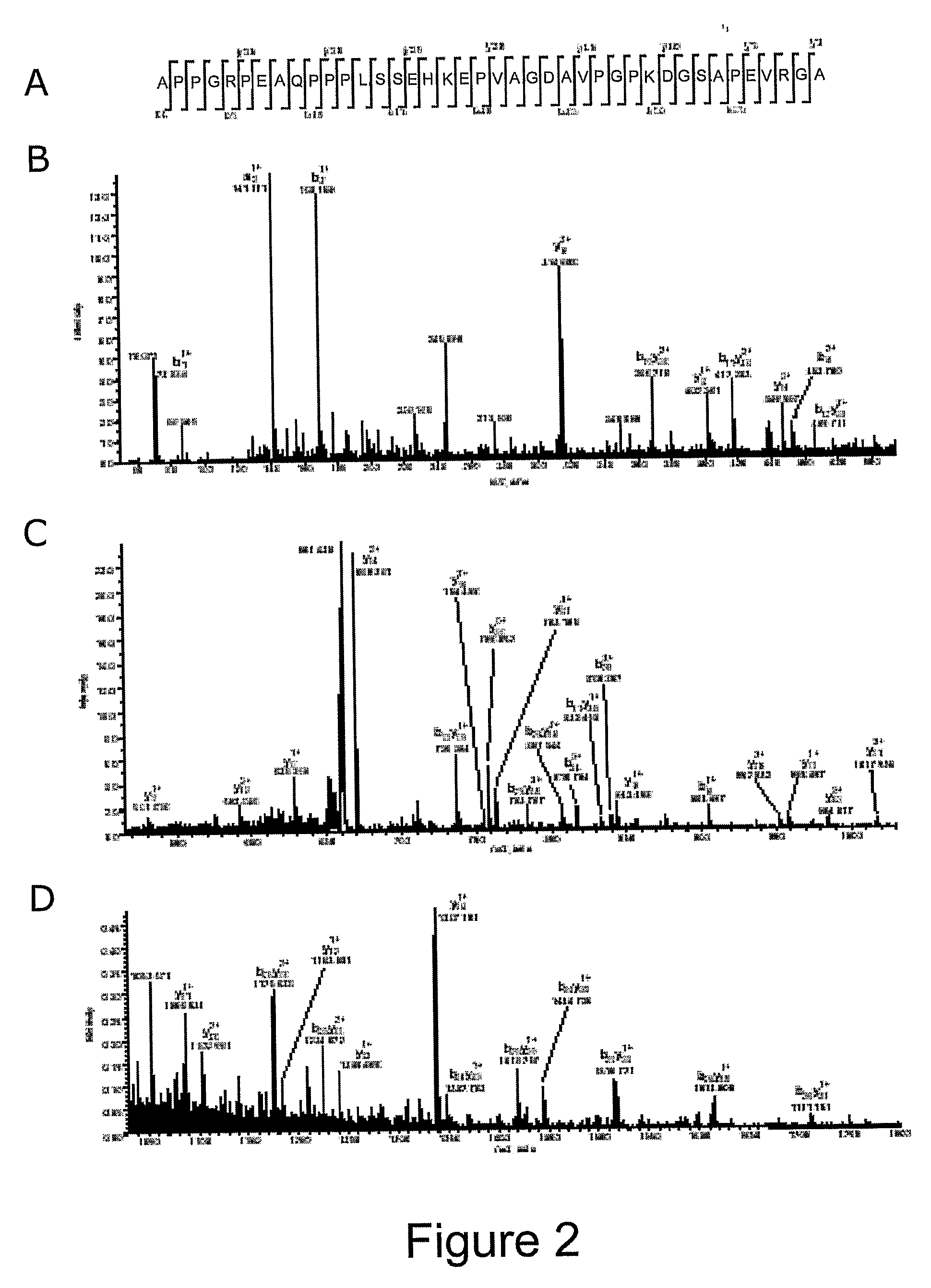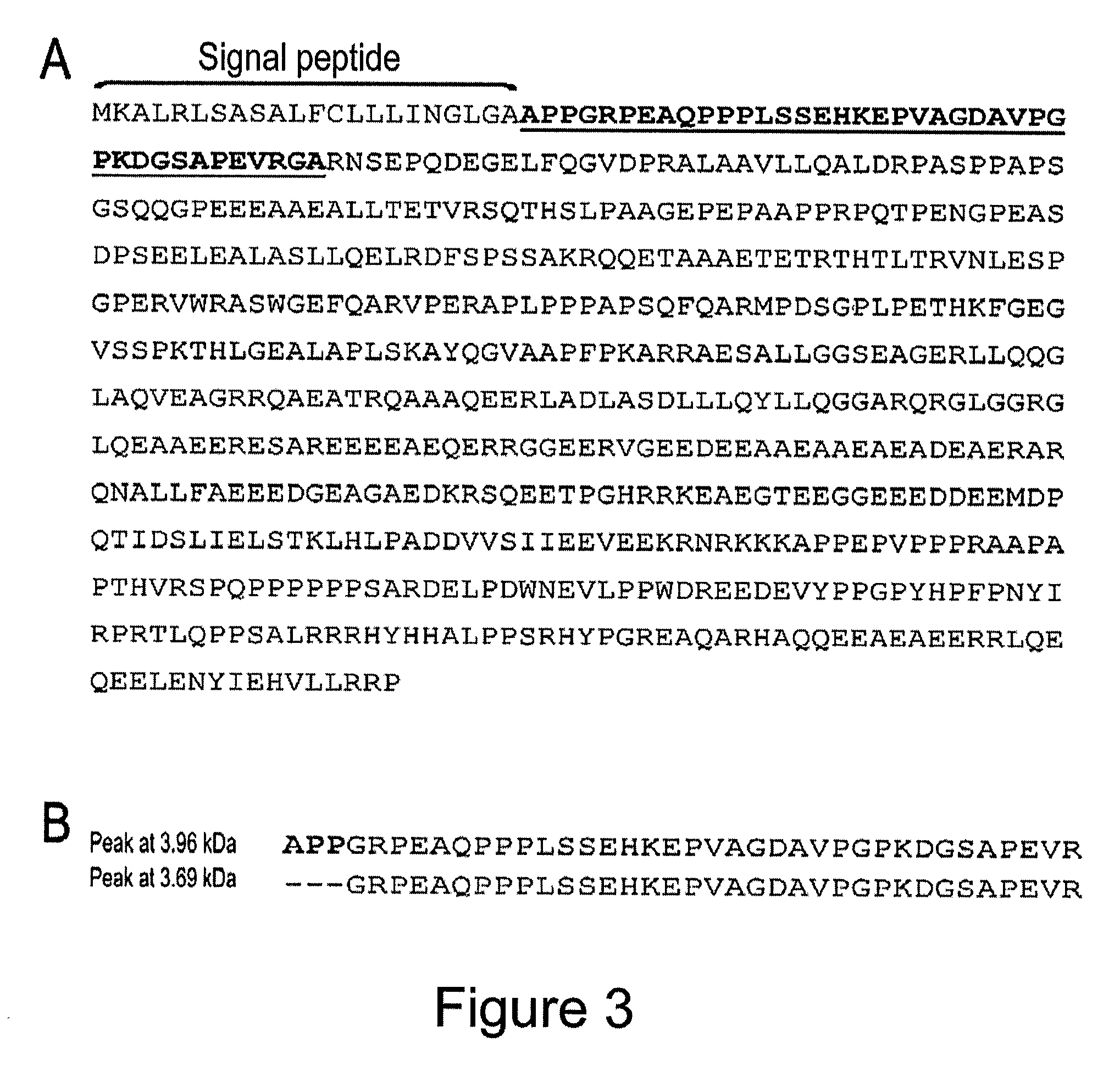Biomarkers and Uses Thereof
a biomarker and peptide technology, applied in the field of peptide biomarkers, can solve the problems of inability to classify based on aetiology, difficult diagnosis, and irritability, and achieve the effect of eliminating the need for detection equipmen
- Summary
- Abstract
- Description
- Claims
- Application Information
AI Technical Summary
Benefits of technology
Problems solved by technology
Method used
Image
Examples
Embodiment Construction
Materials
[0110]Age-matched CSF samples were obtained from healthy individuals (n=40) and patients with first onset psychosis with prominent symptoms of schizophrenia / bipolar disorder (drug free) (n=40). All chemicals were obtained from Sigma. Protein chips and matrices were obtained from Ciphergen (Guildford, UK).
Preparation of CSF Samples for SELDI Analysis.
[0111]Aliquots of 5 μl of the CSF samples were processed on strong anion-exchange (Q10) chips according to the manufacturer's protocols (Ciphergen Biosystems). Briefly, the array spots were preactivated twice with binding buffer (100 mM Tris-HCl, pH 9.0) at room temperature for 10 minutes on a shaker (frequency=5 Hz). Then, 50 μl of binding buffer was added into each protein spot prior to the addition of 5 μl CSF samples. The protein chips were incubated on the shaker for 30 minutes at room temperature. The chips were washed twice with binding buffer and once with HPLC grade H2O, and then air-dried. The chips were then sequentia...
PUM
| Property | Measurement | Unit |
|---|---|---|
| time | aaaaa | aaaaa |
| time | aaaaa | aaaaa |
| time | aaaaa | aaaaa |
Abstract
Description
Claims
Application Information
 Login to View More
Login to View More - R&D
- Intellectual Property
- Life Sciences
- Materials
- Tech Scout
- Unparalleled Data Quality
- Higher Quality Content
- 60% Fewer Hallucinations
Browse by: Latest US Patents, China's latest patents, Technical Efficacy Thesaurus, Application Domain, Technology Topic, Popular Technical Reports.
© 2025 PatSnap. All rights reserved.Legal|Privacy policy|Modern Slavery Act Transparency Statement|Sitemap|About US| Contact US: help@patsnap.com



